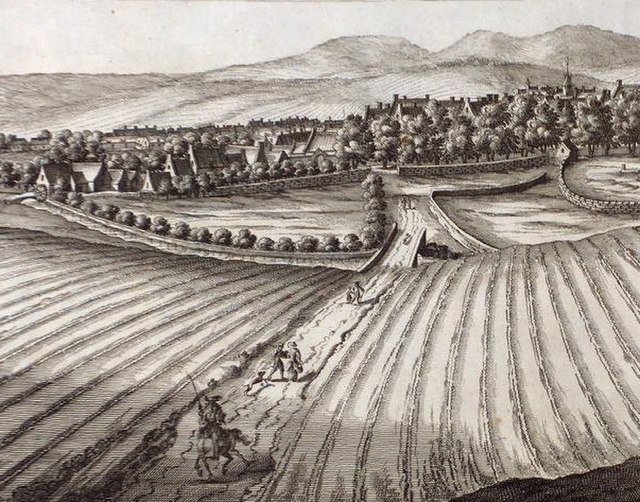The Lowland Clearances were one of the results of the Scottish Agricultural Revolution, which changed the traditional system of agriculture which had existed in Lowland Scotland in the seventeenth century. Thousands of cottars and tenant farmers from the southern counties (Lowlands) of Scotland migrated from farms and small holdings they had occupied to the new industrial centres of Glasgow, Edinburgh and northern England or abroad, or remaining upon land though adapting to the Scottish Agricultural Revolution.
A Scottish Lowland farm c. 1690
Scottish Agricultural Revolution
The Agricultural Revolution in Scotland was a series of changes in agricultural practice that began in the 17th century and continued in the 19th century. They began with the improvement of Scottish Lowlands farmland and the beginning of a transformation of Scottish agriculture from one of the least modernised systems to what was to become the most modern and productive system in Europe. The traditional system of agriculture in Scotland generally used the runrig system of management, which had possibly originated in the Late Middle Ages. The basic pre-improvement farming unit was the baile and the fermetoun. In each, a small number of families worked open-field arable and shared grazing. Whilst run rig varied in its detail from place to place, the common defining detail was the sharing out by lot on a regular basis of individual parts ("rigs") of the arable land so that families had intermixed plots in different parts of the field.

Frontispiece from Transactions of the Society of Improvers (1743)
Runrig farming outside the town of Haddington, East Lothian c. 1690
Sheep feeding on turnips, Auchindrain, Argyll
An 1851 illustration showing the reaping machine developed by Patrick Bell





